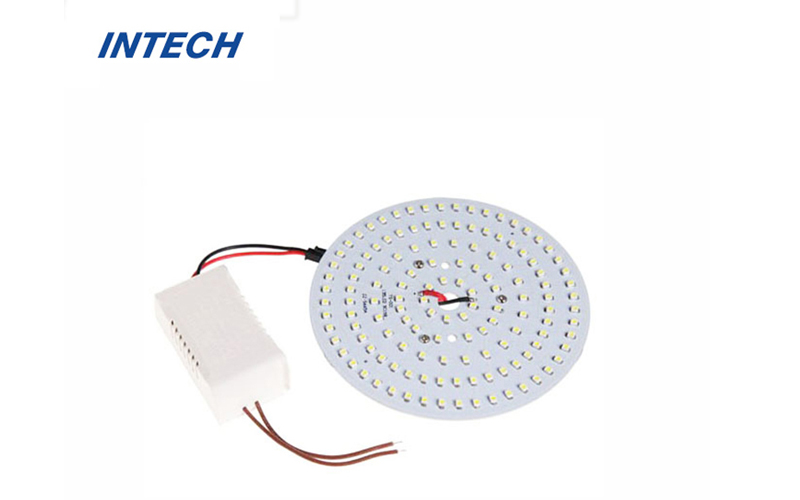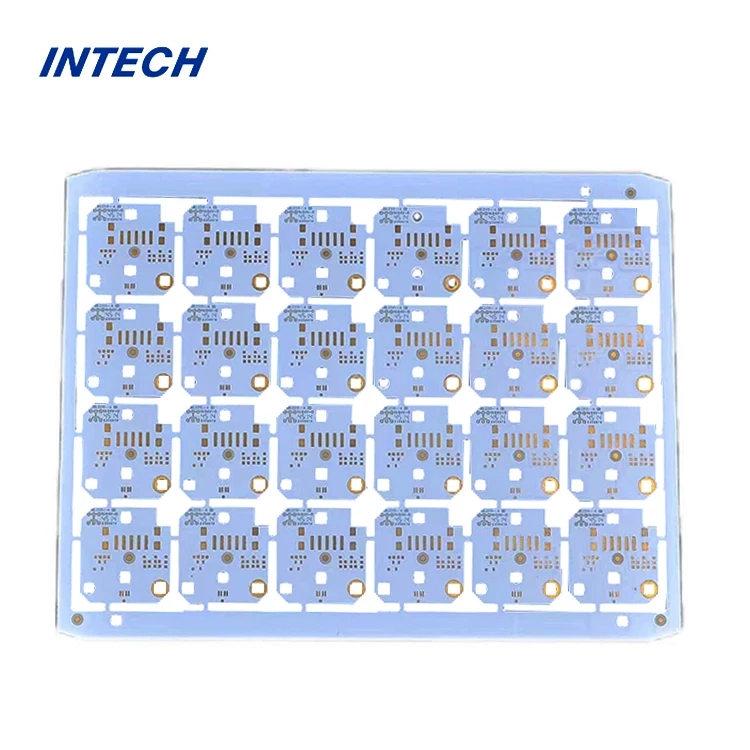What Are the Key Steps in the Aluminum PCB Manufacturing Process?
Date:2024-12-24 14:35:12
Aluminum PCBs have become a popular choice in various industries, particularly for high-power applications and LED lighting, due to their superior thermal management properties. However, the manufacturing process of these boards is more intricate than traditional FR4 PCBs. In this article, we’ll explore the key steps involved in the aluminum PCB manufacturing process and how working with reliable aluminum PCB suppliers and engaging in aluminum PCB prototyping can streamline the process and control aluminum PCB costs.
1. Design and Layout Preparation
The first step in manufacturing an aluminum PCB begins with the design phase. This includes creating the schematic and PCB layout, considering factors such as heat dissipation, component placement, and the desired electrical characteristics. Designers use PCB design software to create precise layouts that ensure optimal performance, especially in applications where heat management is critical. Working with experienced aluminum PCB suppliers can help ensure that the design is both feasible and optimized for the unique characteristics of aluminum substrates. They can offer valuable input on material choices, layer configuration, and the overall manufacturing process, which can save time and money in the long run.

2. Material Selection and Preparation
Once the design is ready, the next step is material selection. Aluminum PCBs typically consist of three layers:
- Copper Layer: The conductive layer where the electrical traces are formed.
- Dielectric Layer: A thermally conductive insulating layer that helps to transfer heat away from the components.
- Aluminum Base: The bottom layer, often an aluminum alloy, which provides structural strength and excellent heat dissipation.
Aluminum PCB prototyping often begins with selecting the right aluminum alloy and dielectric material. The aluminum chosen must have good thermal conductivity to effectively dissipate heat, which is essential for applications like power electronics or LED lighting.
The choice of dielectric material impacts the overall performance and cost of the PCB. Thicker dielectric layers tend to improve heat dissipation but may increase the overall aluminum PCB cost. On the other hand, selecting a lower-quality dielectric material may reduce costs but could compromise performance and reliability in demanding applications.
3. Etching the Circuit
After the materials are prepared, the next step is to etch the copper layer. This is done by coating the copper layer with a photoresist material, which is then exposed to UV light through the PCB design. The unexposed areas are washed away, leaving the desired copper traces. These traces form the electrical pathways for the components. The etching process requires precision to ensure the copper traces are of high quality and conform to the design specifications. The process is often carried out in a controlled environment to maintain consistency and avoid defects.

4. Drilling and Plating
Once the copper etching is complete, the PCB requires drilling to create holes for through-hole components, vias, or mounting points. The drilling process is highly automated and requires precision to ensure that the holes align correctly with the design. After drilling, the PCB undergoes a plating process where the drilled holes are coated with copper to create electrical connections between different layers of the board. This step is crucial for multi-layer aluminum PCBs, as it allows signals to pass between layers.
5. Solder Mask Application
Next, a solder mask is applied to the aluminum PCB to protect the copper traces and prevent short circuits. This mask is usually green, although other colors can be used depending on customer specifications. The solder mask serves several purposes: it protects the copper from corrosion, helps prevent solder bridging during assembly, and adds to the board’s overall durability. The application of the solder mask is followed by a curing process where it is hardened to ensure a reliable protective layer.
6. Silkscreen Printing
The silkscreen printing step involves adding labels, logos, component identification, and other markings on the PCB. This step helps during assembly and troubleshooting, ensuring that components are correctly placed and identifying key information. The printing process uses a special ink and is applied on top of the solder mask. It is a precise step, as incorrect markings can cause confusion during assembly or testing.

7. Testing and Quality Control
Once the aluminum PCB is fully assembled, it goes through a series of quality control and testing procedures. These tests ensure that the board functions correctly and meets the required specifications. Common tests include visual inspection, electrical testing, and thermal testing to ensure the PCB performs well under various conditions. For aluminum PCB suppliers, ensuring that each batch undergoes rigorous testing is crucial to maintaining product quality and customer satisfaction. Testing also helps identify any issues early in the manufacturing process, which can help reduce defects and improve overall efficiency.
8. Assembly and Packaging
After passing the testing phase, the PCB is ready for assembly. Components such as resistors, capacitors, diodes, and integrated circuits (ICs) are placed onto the board, typically through surface-mount technology (SMT) or through-hole technology (THT), depending on the design. Once assembled, the PCB undergoes final inspection and is then packaged for shipping. Packaging is essential to ensure that the board is protected during transit and that it arrives in good condition for the customer.
Conclusion: Streamlining the Process
By understanding the key steps in aluminum PCB manufacturing, manufacturers and designers can take steps to streamline the process. Working with reputable aluminum PCB suppliers ensures high-quality materials and expertise throughout the design and production phases. Engaging in aluminum PCB prototyping allows for the validation of designs before full-scale production, saving both time and money in the long run.
In addition, considering aluminum PCB costs during the design and material selection phase helps to optimize production costs. By choosing the right materials and manufacturing partners, businesses can ensure the final product meets both performance and budgetary requirements.Aluminum PCBs provide an excellent solution for heat-sensitive applications, but careful attention to the manufacturing process is crucial to ensuring both quality and cost-effectiveness.
